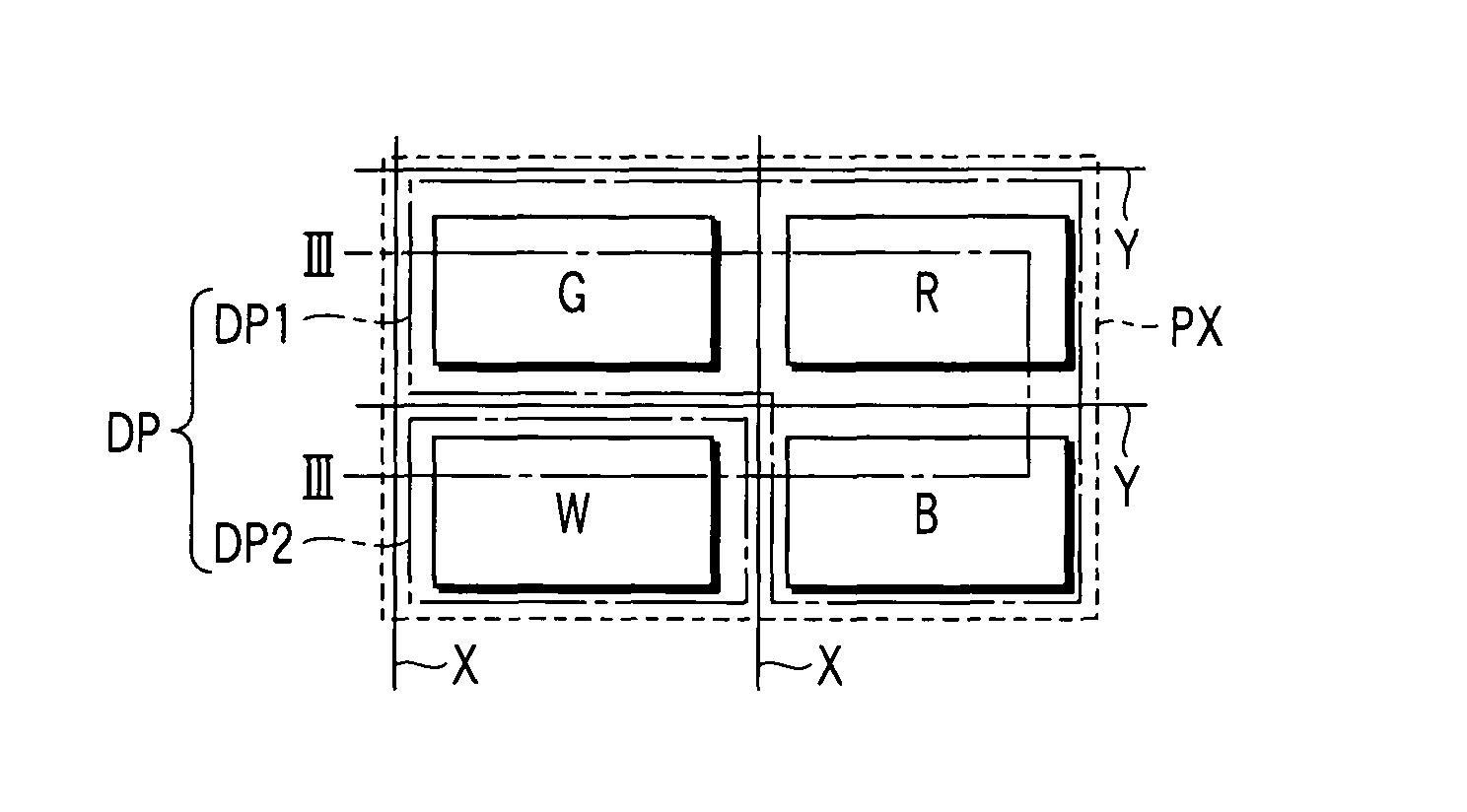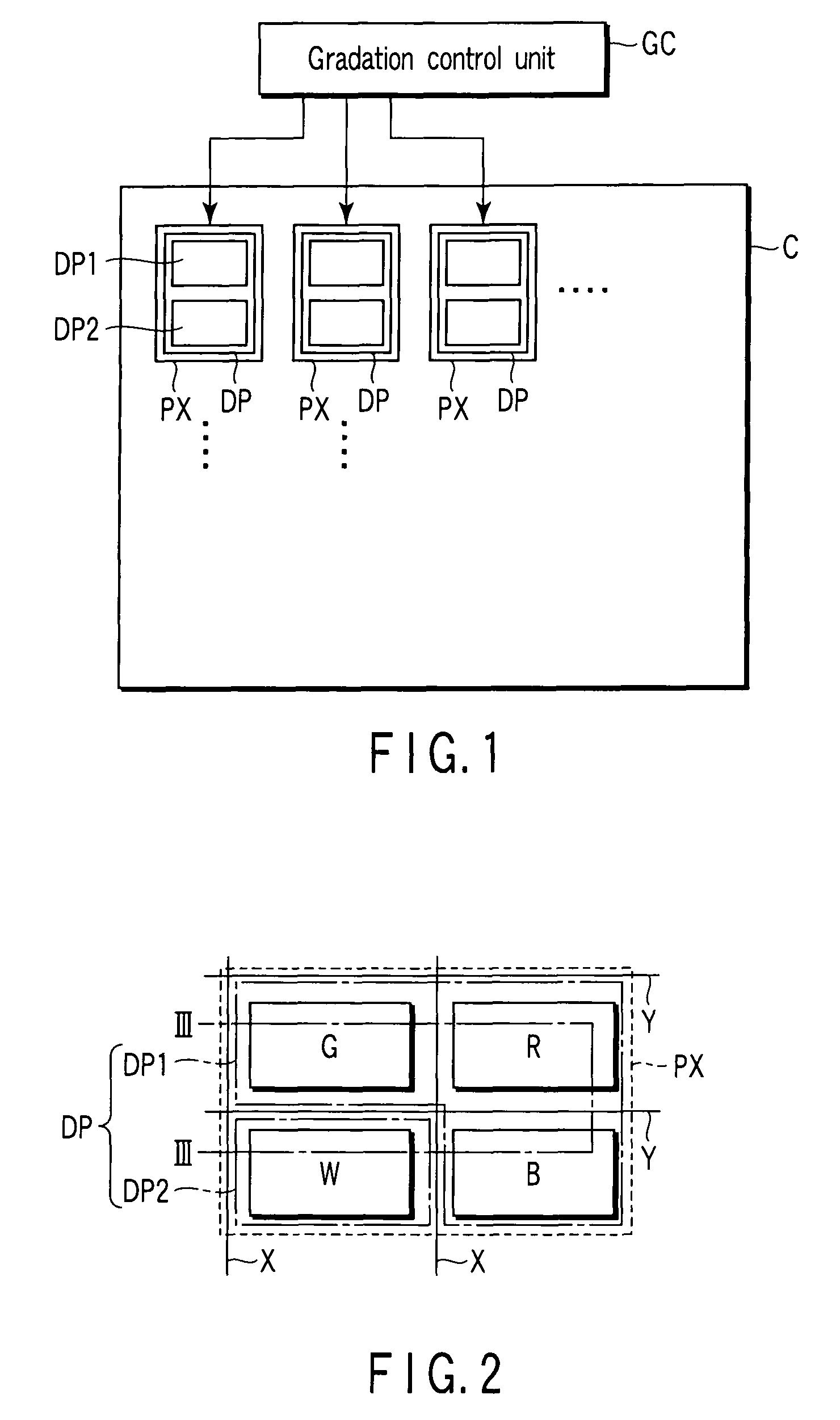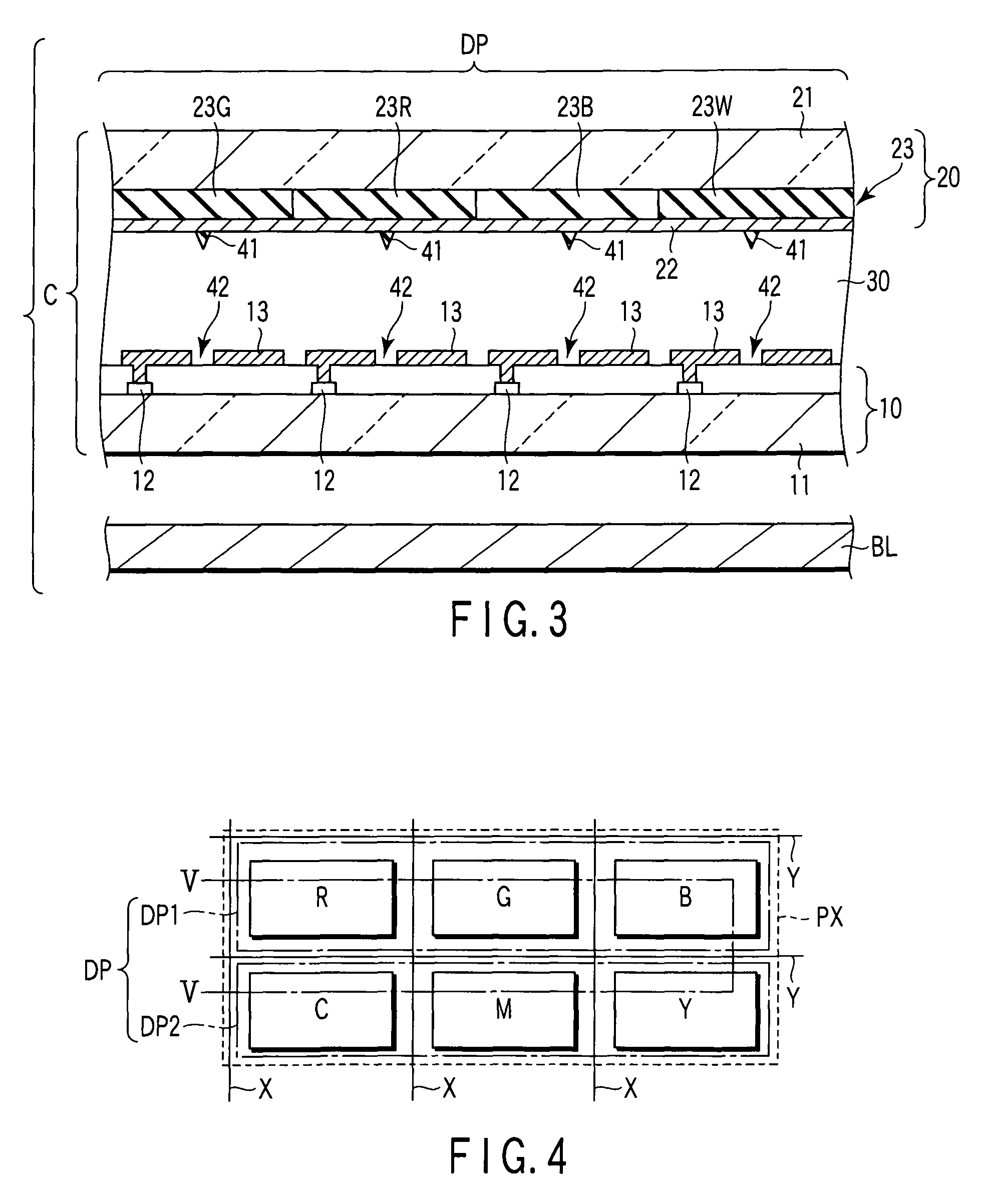Liquid crystal display device
a liquid crystal display and display screen technology, applied in the field of liquid crystal display devices, can solve the problems of insufficient viewing angle at the time of displaying intermediate gradations or white, and achieve the effect of improving color reproduction range and improving display quality
- Summary
- Abstract
- Description
- Claims
- Application Information
AI Technical Summary
Benefits of technology
Problems solved by technology
Method used
Image
Examples
first embodiment
Sub-Pixel Structure
[0046]In a first embodiment, the display section that is disposed in each pixel PX is configured to include a plurality of sub-pixels. In other words, one pixel is composed of these sub-pixels. The first embodiment will be described below, by referring to first to third examples of structure.
>
[0047]As is shown in FIG. 2, in a liquid crystal display device according to a first example of structure, each pixel PX has a display section DP comprising a first white display structure DP1 and a second white display structure DP2. The first white display structure DP1 is composed of sub-pixels of the primary colors. In the example shown in FIG. 2, the first white display structure DP1 is composed of three sub-pixels of red (R), green (G) and blue (B). Alternatively, the first white display structure DP1 may be composed of three sub-pixels of cyan (C), magenta (M) and yellow (Y). The second white display structure DP2 is composed of a single sub-pixel of white (W). In shor...
example 1
Circular-Polarization-Based MVA Mode
[0088]Next, Example 1, in which the first embodiment is applied, is described. As is shown in FIG. 13, a liquid crystal display device according to Example 1 is a liquid crystal display device of a circular-polarization-based vertical alignment mode in which liquid crystal molecules in each pixel are aligned substantially vertical to the major surface of the substrate in a voltage-off state. The liquid crystal display device comprises a circular polarizer structure P, a variable retarder structure VR, a circular analyzer structure A and a backlight BL which emits white light.
[0089]The variable retarder structure VR includes a dot-matrix liquid crystal cell C in which a liquid crystal layer is held between two electrode-equipped substrates. Each pixel may be formed with the structure of any one of the first to third examples of structure. Each pixel is divided into two domains.
[0090]The circular polarizer structure P is disposed on the backlight BL...
example 2
Linear-Polarization-Based MVA Mode
[0102]Next, Example 2, in which the first embodiment is applied, is described. As is shown in FIG. 15, a liquid crystal display device according to Example 2 is a liquid crystal display device of a linear-polarization-based vertical alignment mode in which liquid crystal molecules in each pixel are aligned substantially vertical to the major surface of the substrate in a voltage-off state. The liquid crystal display device comprises a circular polarizer structure P, a variable retarder structure VR, a circular analyzer structure A and a backlight BL which emits white light. The structural parts common to those in Example 1 are denoted by like reference numerals, and a detailed description thereof is omitted.
[0103]The variable retarder structure VR includes a dot-matrix liquid crystal cell C in which a liquid crystal layer is held between two electrode-equipped substrates. Each pixel may be formed with the structure of any one of the first to third e...
PUM
 Login to View More
Login to View More Abstract
Description
Claims
Application Information
 Login to View More
Login to View More - R&D
- Intellectual Property
- Life Sciences
- Materials
- Tech Scout
- Unparalleled Data Quality
- Higher Quality Content
- 60% Fewer Hallucinations
Browse by: Latest US Patents, China's latest patents, Technical Efficacy Thesaurus, Application Domain, Technology Topic, Popular Technical Reports.
© 2025 PatSnap. All rights reserved.Legal|Privacy policy|Modern Slavery Act Transparency Statement|Sitemap|About US| Contact US: help@patsnap.com



